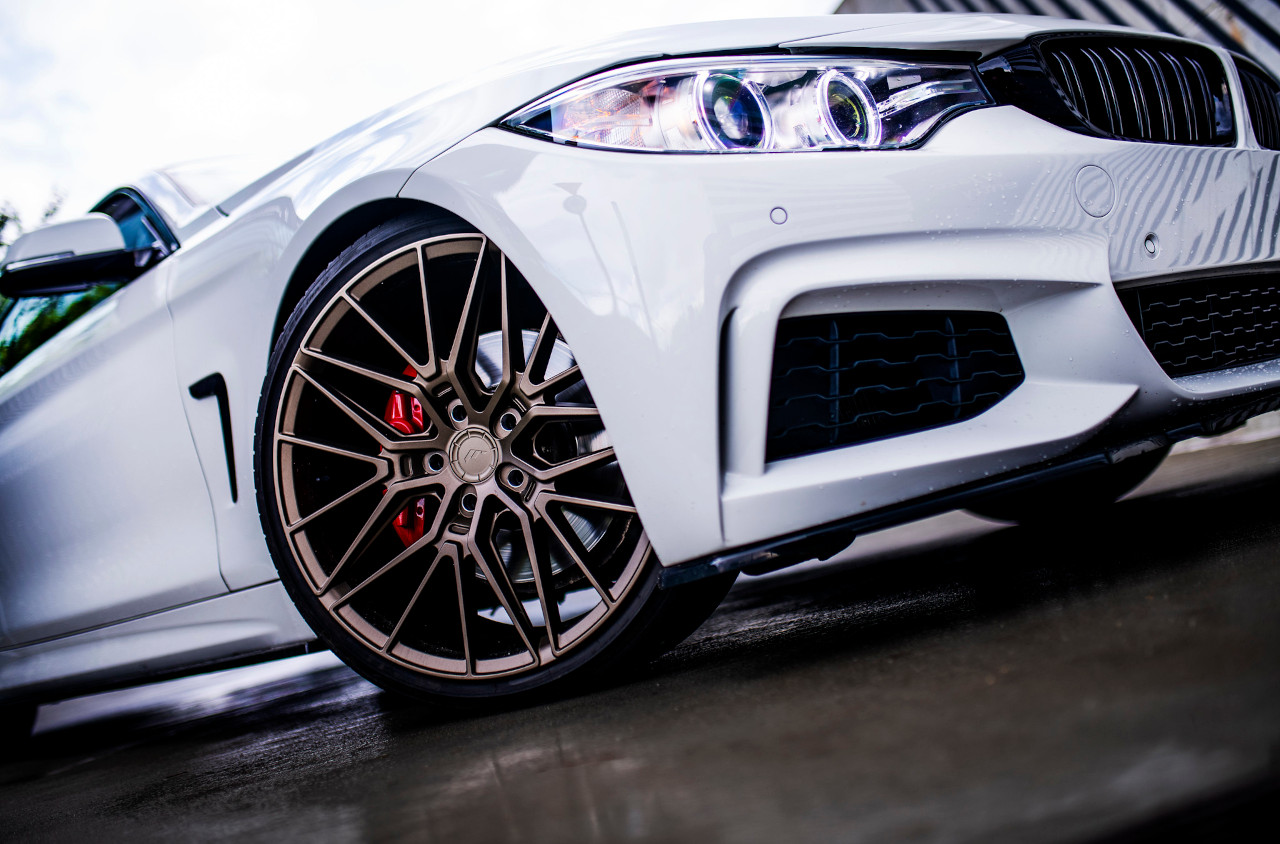
It is one of the most popular aftermarket parts on the market. The wheel, beyond its mechanical role, has become over time a piece of equipment that we choose for its design or its technical characteristics. However, it is not always easy to find your way among the thousands of models available on the market. We take stock to help you choose the right wheel for your car and your use!
Summary:
1. The role of wheels
As you probably know, the wheel plays a connecting role between the tire and the wheel hub assembly, and can be made of different materials, most often sheet steel or aluminum alloy. It is produced by casting, forging or by a hybrid process called flow forming. There are one-piece wheels or multi-piece wheels that can be taken apart.
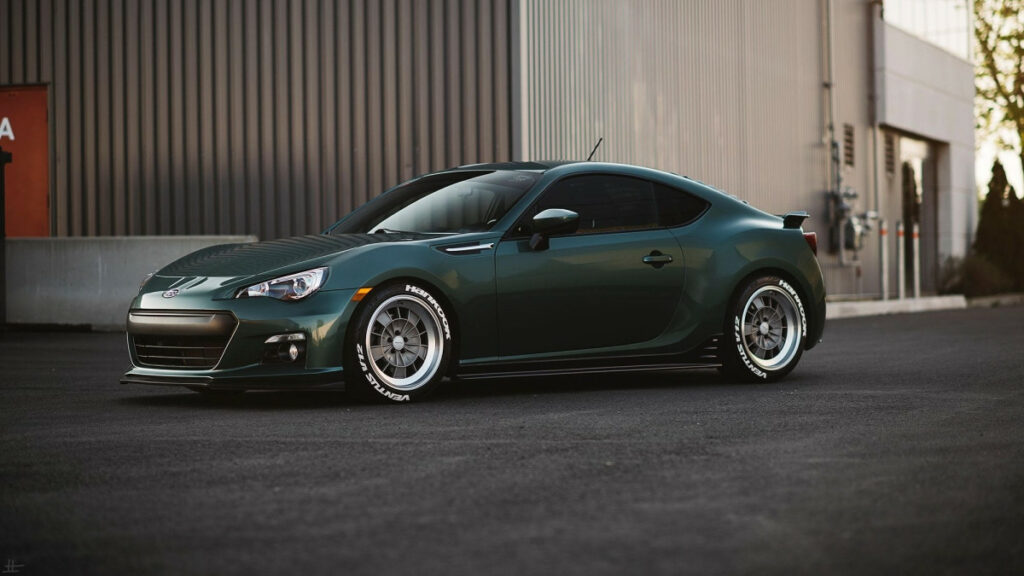
Several reasons can justify the purchase of aftermarket wheels: replacing a scratched or bent wheel, enhancing the sportiness of your car, preserving the stock wheel of your classic car or your sports car for track days, increasing the handling and the dynamic abilities of your vehicle with wider or lighter models…
There are a wide variety of wheel brands on the market. From the top-of-the-range model to the most affordable, for daily use on the street or for leisure activities, or even for racing, you are spoiled for choice. Here is a selection of some top brands available on the DriftShop online store:
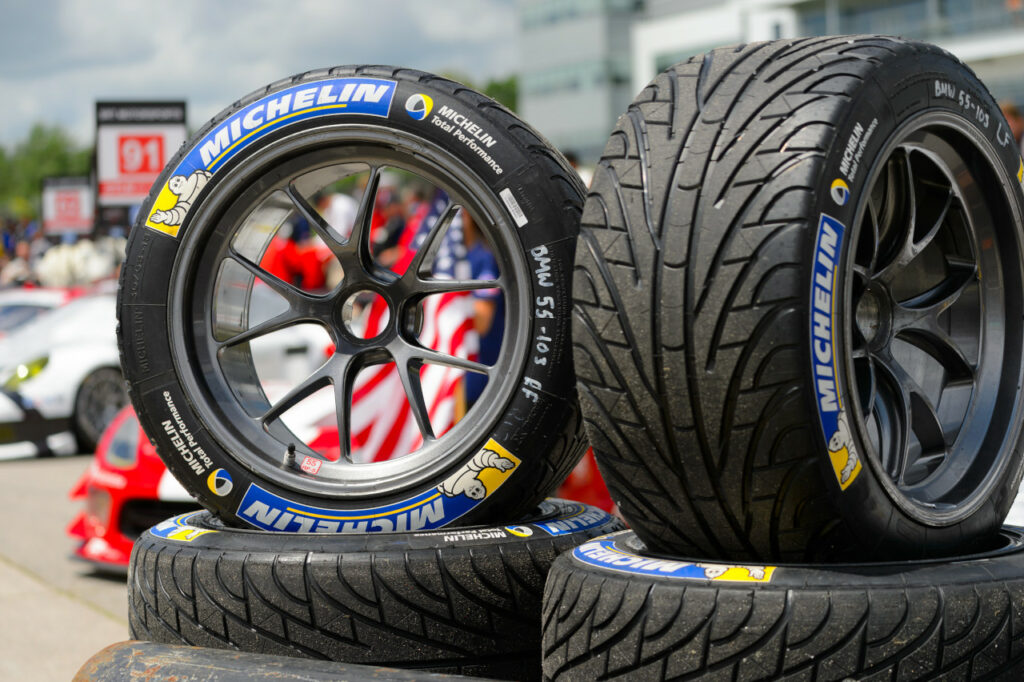
Some brands specialize in a particular wheel style while others offer a wide range of models to suit different looks and trends. For example, the German look from Europe, the JDM style born in Japan, or the GT or rally style racing wheels. In any case, whatever your vehicle, modern, youngtimer or classic, you are sure to find the right product for you!
2. Understanding the specifications of a wheel
When you want to buy alloy wheels, it is first necessary to know how to identify the different information that appears on them. These dimensions are generally engraved on the face or on the back of the rim, but can also be indicated on a label. Take for example the features of this Rota wheel:
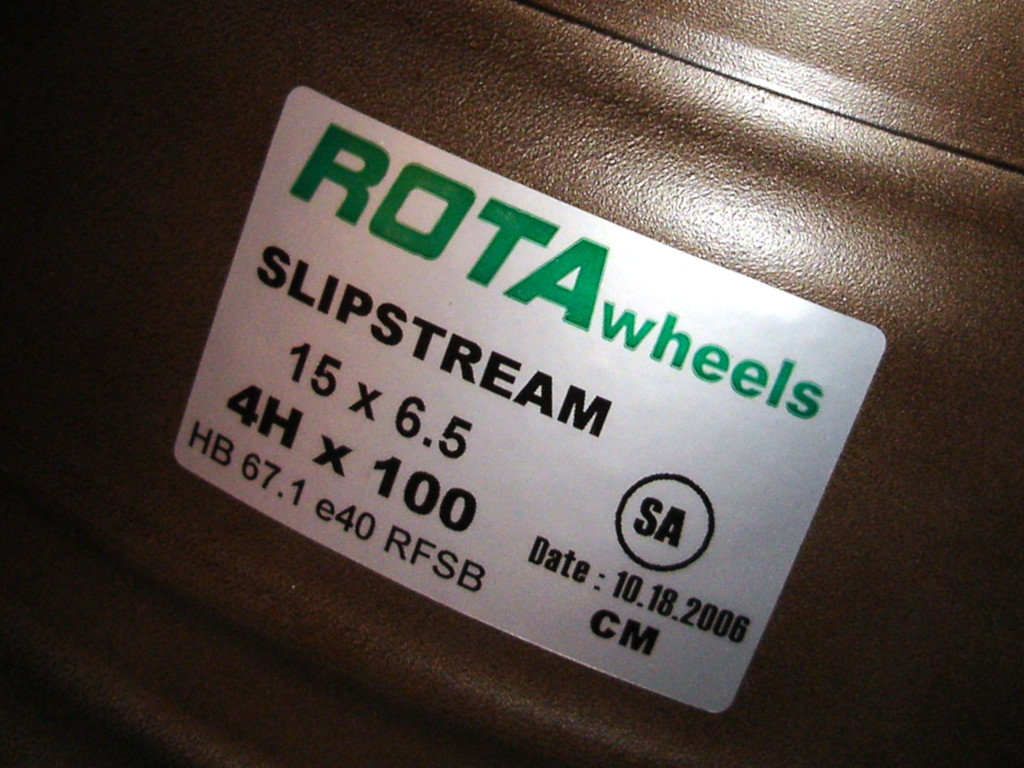
15 : diameter in inches 6.5 : width in inches 4H x 100 : PCD in millimeters HB 67.1 : bore in millimeters e40 : offset in millimeters
Please note: Some manufacturers list wheel diameter and width in reverse: 6.5 x 15. Typically, the larger number indicates the diameter.
You can also find one or more letters (J, JJ, K, B, etc.) following the width dimension. This indicates the shape of the hook, or inner edge of the rim.
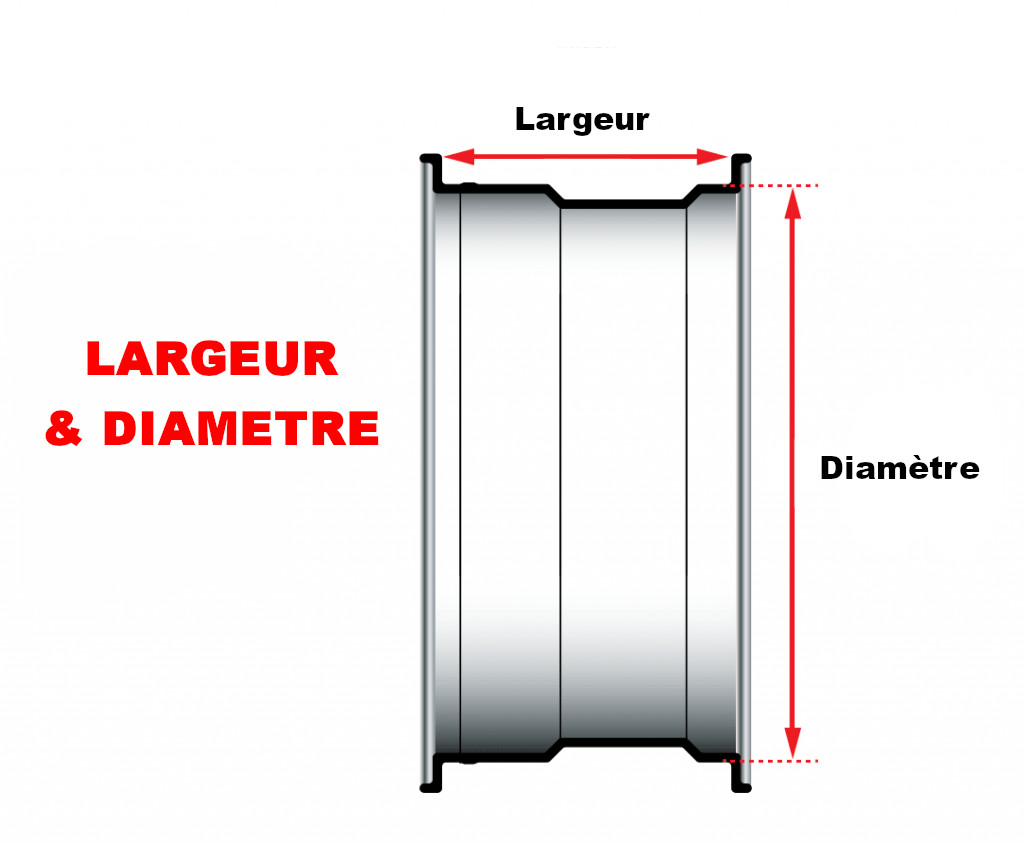
Diameter and width are measured at the bead of the tire, i.e. the area where the tire is in contact with the wheel. It is essential to choose wheels of the same diameter as the tires. It is then possible to obtain different looks, such as a stretched effect, by varying the width of the tire. Remember that to pass the technical car inspection in France, it is forbidden to increase the size of a wheel by more than 2 inches compared to stock.
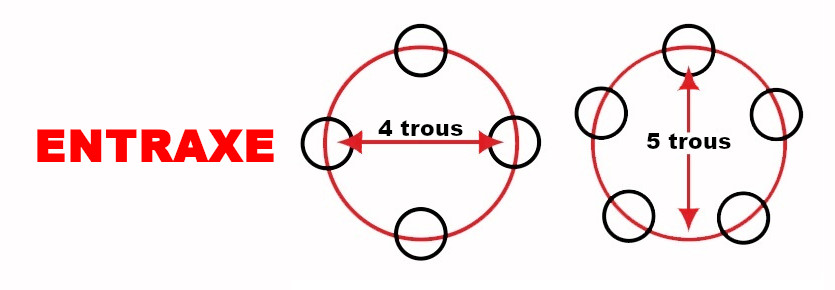
The PCD (for Pitch Circle Diameter) is the diameter of the circle which passes through each hole in the wheel. For example, 4×100 indicates 4 holes and a diameter of 100 millimeters. It must be identical to the PCD of your stock wheels. Among the most common configurations, there are 4×100, 4×114.3, 5×100, 5×114.3, 5×120… To find out the standard PCD of your vehicle, we recommend the website www.entraxes.fr.

The bore is the diameter of the center hole of the wheel. It is often specific to a brand: 54.1, 57.1, 60.1… If the wheel bore is smaller than stock, it will not fit on the hub; if it is higher, it will not be centered and all the vertical load will rest on the bolts or studs. Fortunately, most aftermarket wheel brands offer machined models with a larger bore and provide spigot rings.
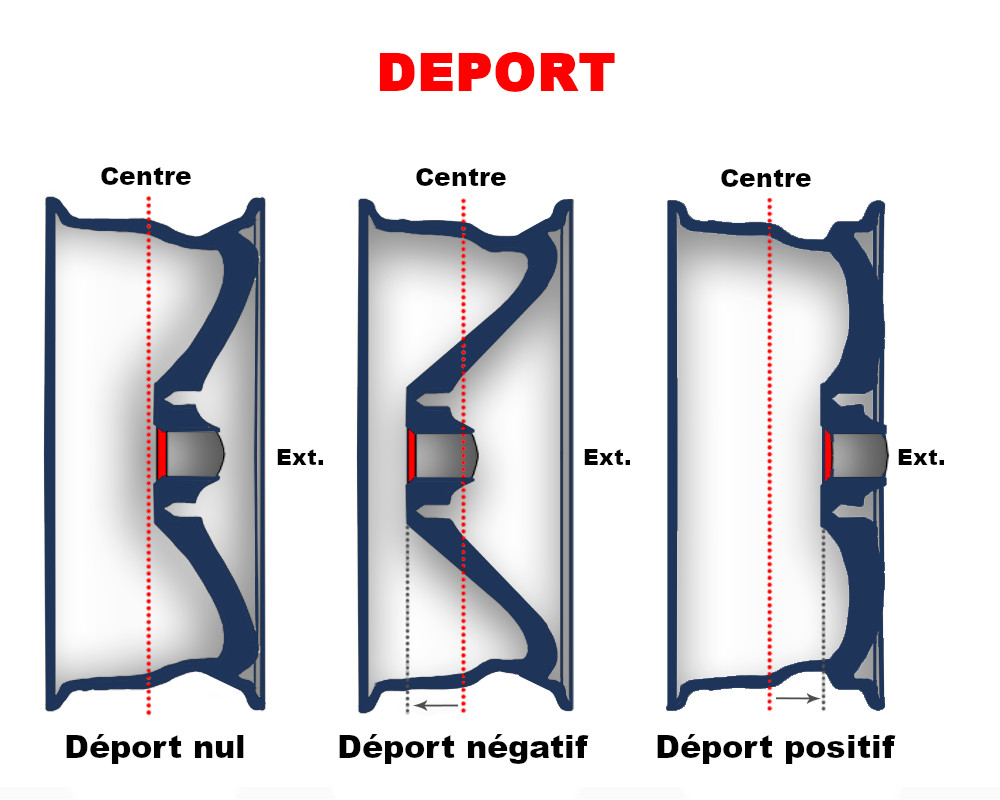
The offset, also called ET (for Einpresstiefe), is the distance from the hub-mounting surface to the wheel’s true centerline. On a stock wheel, it’s usually between 20 and 50. If the offset is less than the stock, the wheel will move closer to or out of the fender; if it is higher, it will go inside the fender (at the risk of coming into contact with the suspension or the brakes).
3. What is fitment?
This term refers to the appearance that the wheel will give to your vehicle. It can be more or less aggressive depending on the diameter, width and offset of the wheel.
We can list three major types of currently popular fitments:
– The stock fitment gives the vehicle a discreet sporty look thanks to wheel sizes close to the stock dimensions. This very function-oriented configuration does not require any body modifications. That said, it is recommended to lower the vehicle for a perfect aesthetic result, in particular using sports shock absorbers and lowering springs, or coilovers allowing you to adjust the ride height as you wish.
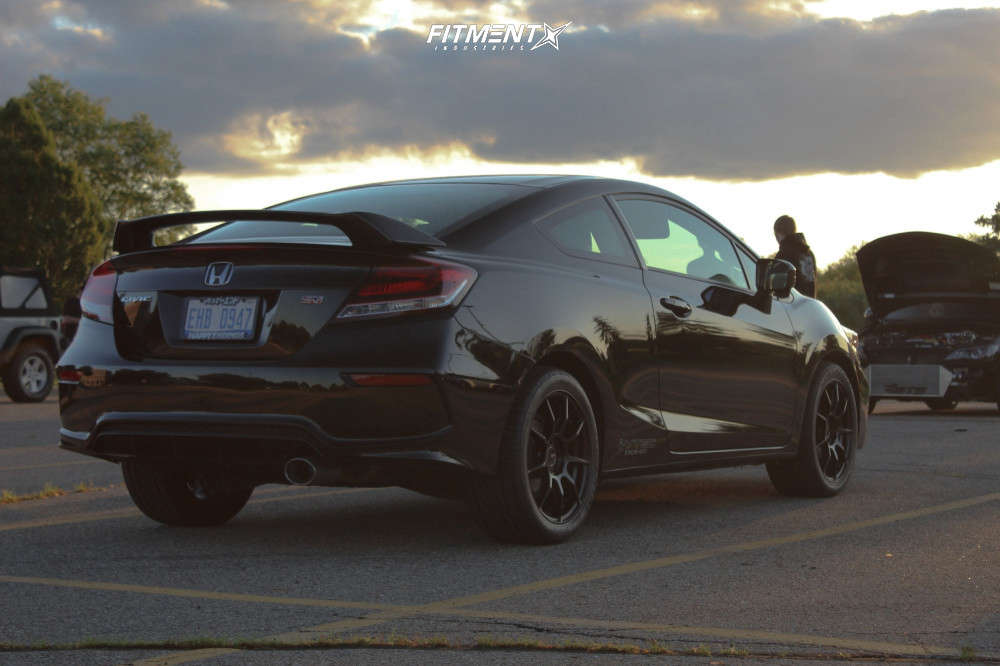
– The flush fitment is obtained with wheels slightly wider and aligned with the fenders. This look requires a reduced ride height, slight negative camber, stretched tires and modified wheel arches (pulled or rolled using a Fender Roller). Wheel spacers may also be required to achieve the desired effect.
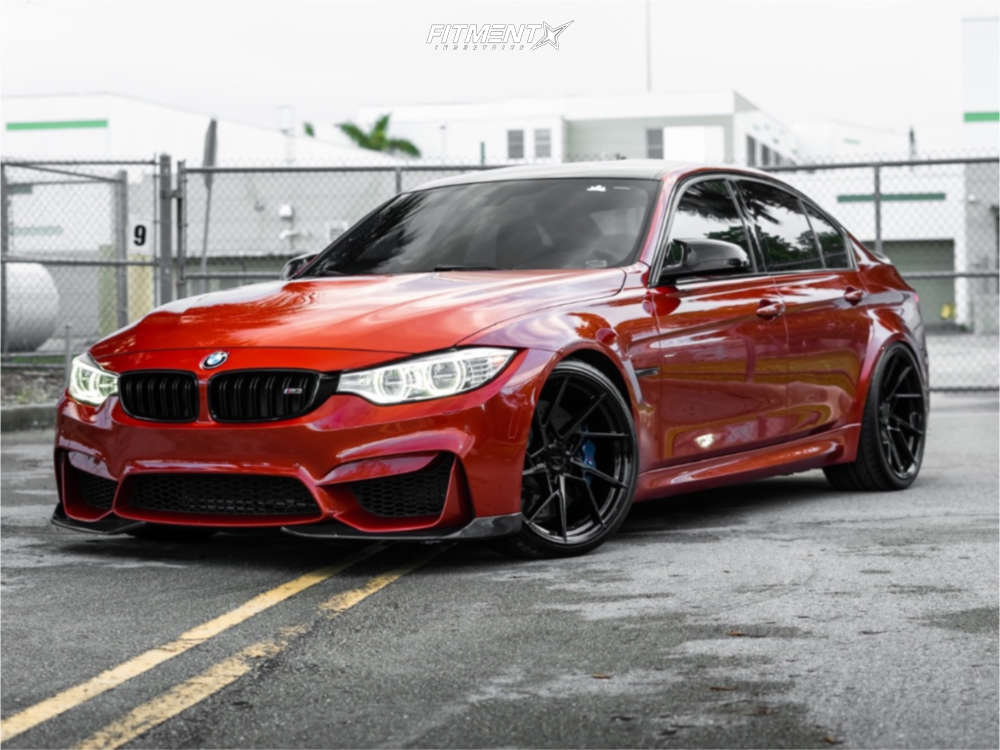
– The extreme fitment gives the vehicle a sensational ultra-wide look. Heavy body work, suitable suspensions (coilovers or air suspensions), wide fenders or overfenders are essential. Be careful, this style puts a strain on certain parts such as U-joints and bearings.
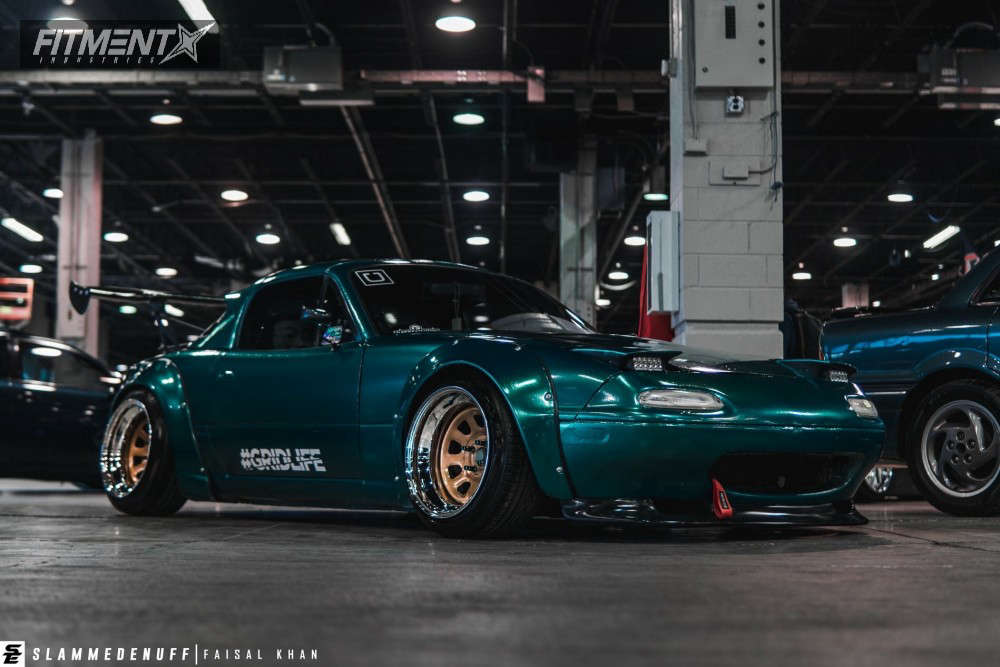
Of course, depending on the car, the sizes of the wheels may differ greatly and there is no real rule for obtaining this or that look. However, here are some examples of common sports models to give you an idea of the characteristics to remember:
| Nissan 200SX S13 (4×114.3) | Honda S2000 AP1 (5×114.3) | BMW M3 E36 (5×120) | Mazda MX-5 NA (4×100) | |
| OEM sizes | 15×6 ET40 | F. 16×6.5 ET55 R. 16×7.5 ET65 | 17×7.5 ET41 | 14×5.5 ET40 |
| Stock fit | 16×7 ET40 | 17×7.5 ET42 | 17×8 ET35 | 15×7 ET38 |
| Flush fit | 16×9 ET20 | 17×9 ET45 | 17×9 ET30 | 15×8 ET25 |
| Extreme fit | 17×10.5 -23 | F. 18×9.5 ET8 R. 18×11 ET0 | F. 17×11 ET12 R. 17×12 ET0 | 15×9 ET-25 |
You can check the stock size of your wheels and tires on the website www.taille-pneu.com and carry out simulations to help you choose the best specs.
Finally, the design of the wheel itself will also have an influence on the visual impact. A wide rim with a small offset and a low lip (or outer edge) will not have the same look as a rim with small width and offset but a deep lip.
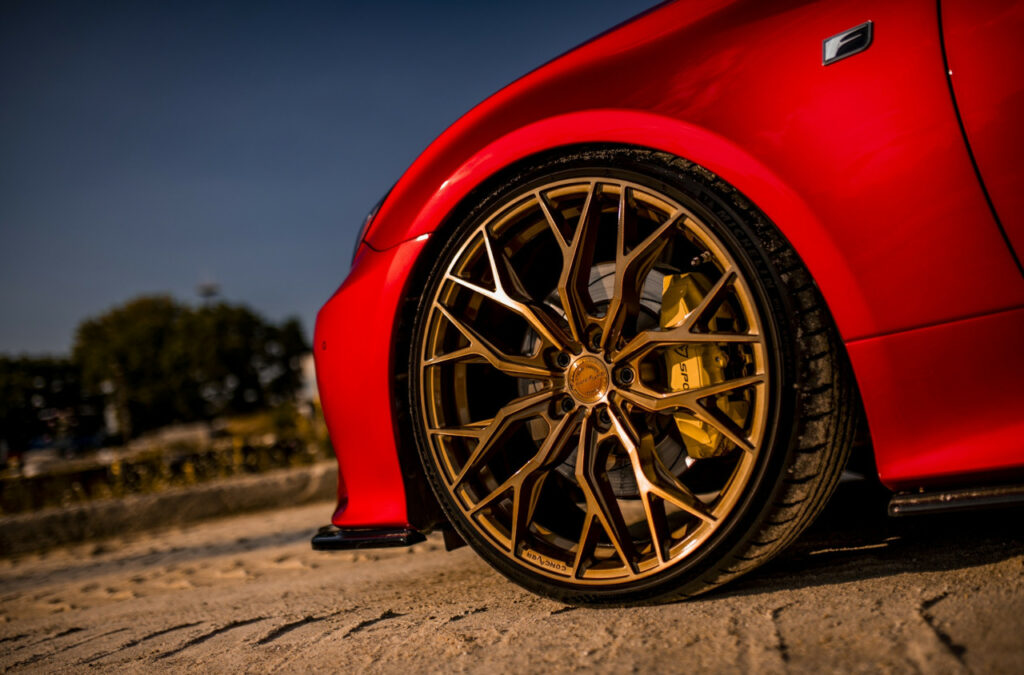
In the same way, a concave wheel will not have the same aesthetics as a convex one. The first gives a sunken effect with the center tucked inwards in relation to the spokes, while the second offers a domed effect with the center facing outwards in relation to the spokes. Note also that it is possible to install wheels on the same car that are convex at the front to improve steering and concave at the rear in order to accommodate large brake calipers in particular.
Photos sources: JR Wheels / Rota / Concaver / BBS / Performance Alloys / Cool Air VW / Pro Billet Wheels / Santa Ana Wheel / Fitment Industries
